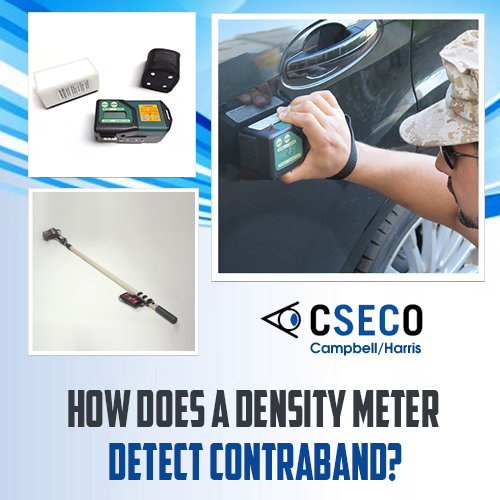
A density meter is any device that measures the density (compactness) of an object. But not all density meters are made equally. There is a density meter that is used for scientific purposes, while other density meters are used for law enforcement purposes.
A density meter is used by the police, border patrol officers, or any other law enforcement agents to detect the presence of something suspicious that is hidden behind everyday objects. An example of this is contraband stuffed inside a spare tire or seat cushion.
When it comes to using a density meter, there’s only one that comes to mind: The Buster density meter from Campbell/Harris Security Equipment Company (CSECO).
The first-ever density meter used for law enforcement and drug interdiction, the Buster density meter uses sophisticated technology that enables quick and accurate detection of contraband items hidden under various materials.
The Buster density meter uses low-intensity gamma radiation emitter and scintillation detector to quickly scan a variety of surfaces within a matter of minutes. With the Buster density meter, it only takes about five minutes to scan an entire vehicle, or about 10 minutes for a room of average size.
Other detecting devices that use microwave, millimeter wave, radio wave, or ultraviolet wave technologies that can detect several types of hidden items and may not be able to perform scans on different types of surfaces. The Buster, on the other hand, can accurately detect any type of concealed items through many different materials – wood, metal, reinforced plastic, cement, and even dirt.
The Buster allows officers to do quick once-overs on items and spaces which are suspected of hiding contraband. This is helpful specially to border patrol agents, who inspect every vehicle that passes through the national borders. And they do this every day.
But despite its quick performance, the Buster maintains accuracy in its readings. The low-intensity beam can penetrate the object in question, up to six inches deep (but it depends on the thickness of an object’s material). The Buster’s “backscatter radiation” technology provides telltale signals of an object’s density level.
In a “backscatter radiation” technology, the low-intensity gamma rays beam out of the Buster, then “bounce off” the object and return to the device. The denser the object, the more gamma rays potentially scatter back, which increases the Buster’s reading. For instance, the Buster is used to scan a spare tire, which is a hollow object because it is only full of air inside. But when the Buster detects an unusual increase of density level from that spare tire, that is a good indication that it has something stuffed inside it.
As the Buster alerts the user that something is suspicious inside the object that is being scanned, it sends out both visual and audible readouts. The Buster can quickly zero in on the specific location of concealed contraband such as narcotics, cash, and weapons among other types.
The Buster is now improved from its initial version, the K910B to its updated version, the K910G. The latter now has improved features such as faster electronics, a 25% smaller radioactive source, as well as lead-free components. These improvements make the Buster the most accurate and safest density meter for use by law enforcement officers as well as for the environment.
The Buster density meter has been widely praised as the “gold standard” of contraband detection equipment. With the latest technology and safety features, the Buster is guaranteed to be the most dependable companion you’ll ever have in detecting hidden contraband.
